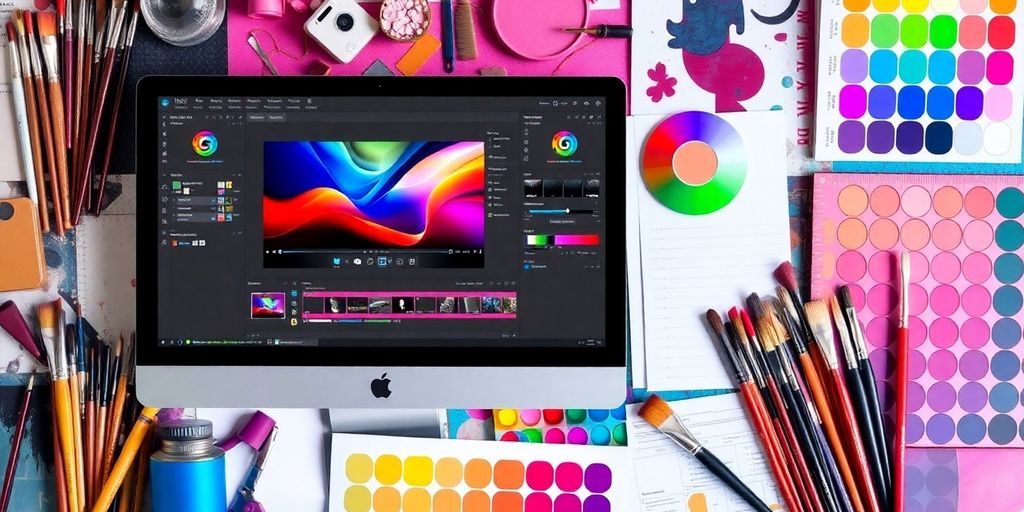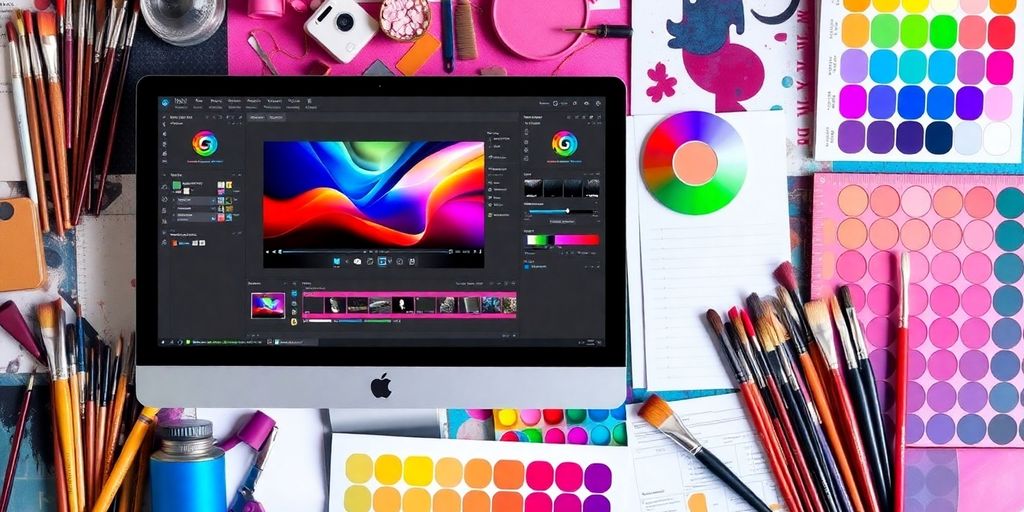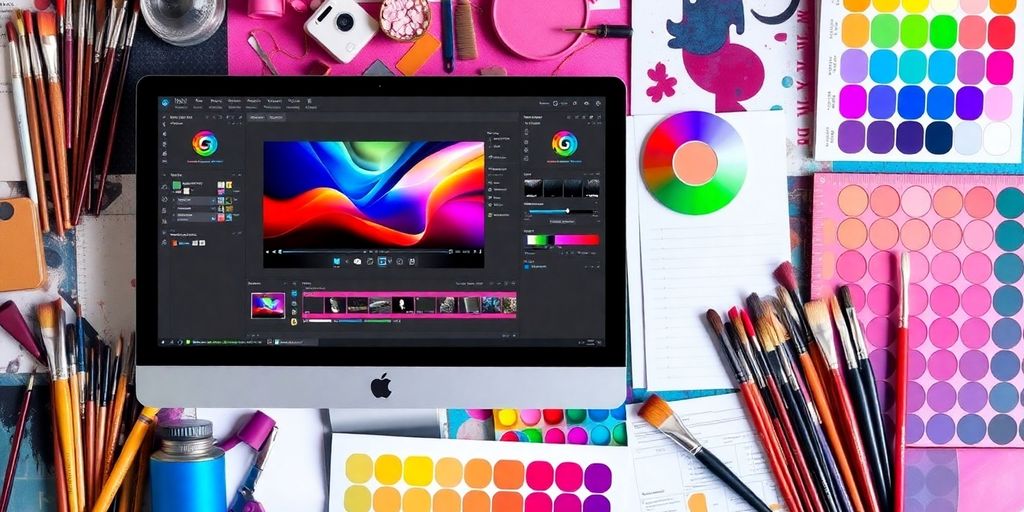How Long in the Sun for Vitamin D: Your Essential Guide to Safe Sun Exposure

Getting enough vitamin D is crucial for your health, and sunlight is one of the best sources. But how long in the sun for vitamin D? It’s a common question, especially with all the talk about sun safety and skin cancer. This guide will break down everything you need to know about safe sun exposure and how to maintain healthy vitamin D levels without risking your skin.
Key Takeaways
- Aim for about 10 to 30 minutes of sun exposure several times a week, depending on your skin type.
- The best time to soak up vitamin D is around midday when the sun is strongest.
- Use sunscreen after a short period in the sun to protect your skin from burns.
- Your location and the time of year can affect how much sun you need for adequate vitamin D.
- Consider dietary sources or supplements if you can’t get enough sun exposure.
Understanding Vitamin D Production
What Is Vitamin D?
Okay, so vitamin D isn’t technically a vitamin. It’s more like a hormone that our bodies can produce when our skin is exposed to sunlight. It plays a big role in keeping our bones strong and healthy. You can also get it from certain foods or supplements, but sunlight is a major source for most people. It’s fat-soluble, meaning your body stores it, so you don’t need to get it every single day.
How Does Sunlight Help?
Sunlight helps your body make vitamin D through a pretty cool process. When ultraviolet B (UVB) rays hit your skin, they kick off a reaction that turns a chemical in your skin into vitamin D3. Then, your liver and kidneys convert that into the active form of vitamin D that your body can actually use. It’s like a little solar panel working right there in your skin! Factors like skin color can affect this process.
Why Is Vitamin D Important?
Vitamin D is super important for a bunch of reasons. Here’s a quick rundown:
- Bone Health: It helps your body absorb calcium, which is crucial for strong bones and preventing osteoporosis.
- Immune System: Vitamin D supports your immune system, helping you fight off infections.
- Muscle Function: It plays a role in muscle strength and function.
- Overall Health: Some studies suggest it may also help with things like heart health and mood regulation. The recommended daily dose is important to consider.
Making sure you get enough vitamin D is important for your overall health. It’s not just about strong bones; it affects a lot of different systems in your body. So, finding a good balance of sun exposure, diet, and supplements (if needed) is key.
Factors Influencing Sun Exposure Time
Okay, so you’re trying to figure out how long you need to be in the sun to get your Vitamin D fix. It’s not as simple as "15 minutes and you’re done!" There are a bunch of things that change how much sun you actually need. Let’s break it down.
Skin Type Sensitivity
Your skin tone plays a big role. People with lighter skin tend to produce vitamin D faster than those with darker skin. That’s because melanin, the pigment that makes your skin darker, acts like a natural sunscreen. So, if you have darker skin, you’ll likely need to spend more time in the sun to get the same amount of vitamin D as someone with lighter skin. It’s all about how much UV light your skin can absorb.
Geographical Location
Where you live matters a lot. If you’re closer to the equator, the sun’s rays are more direct, and you’ll need less time in the sun. If you live further north or south, the sun’s rays are weaker, especially during winter, so you’ll need more time. Think about it: someone in Florida will get way more sun exposure in a short time than someone in, say, Maine, during December. The angle of the sun makes a huge difference.
Time of Year
This is pretty straightforward. During the summer, the sun is stronger, and you need less time outside. In the winter, the sun is weaker, and you need more time. The amount of UVB radiation reaching the earth’s surface changes a lot throughout the year. So, that 15-minute rule that works in July? Probably won’t cut it in January.
It’s important to pay attention to the UV index. You can usually find this information on weather apps or websites. A higher UV index means stronger sun, and less time needed for vitamin D production. Always be mindful of the risks of overexposure, no matter the time of year.
Optimal Times for Sun Exposure

Best Time of Day
So, when’s the best time to soak up those rays for vitamin D? Well, midday is generally considered the most effective time. The sun’s UVB rays, which are responsible for vitamin D synthesis in your skin, are at their peak intensity around noon. This means you can spend less time in the sun to get the same vitamin D boost compared to other times of the day. Makes sense, right?
Duration of Exposure
Okay, so you know midday is good, but how long should you actually stay out there? It’s not a one-size-fits-all answer, unfortunately. Factors like your skin type, location, and the time of year all play a role. Generally, for people with lighter skin, something like 5-15 minutes of midday sun exposure several times a week might be enough. If you’ve got darker skin, you might need a bit longer, maybe around 25-40 minutes. The key is to pay attention to your skin and avoid burning. No one wants a sunburn!
Seasonal Considerations
Seasons matter a lot. In the summer, when the sun is higher in the sky, you’ll need less time outdoors to get your vitamin D fix. But during the winter months, especially if you live in a northern latitude, the sun’s rays are weaker, and you might need to spend more time outside, or consider other sources of vitamin D like supplements or food.
Remember, it’s all about balance. You want to get enough sun to produce vitamin D, but you also want to protect your skin from damage. Listen to your body, and adjust your sun exposure accordingly.
Safe Sun Exposure Practices

Using Sunscreen Effectively
Okay, so sunscreen. We all know we should use it, but how many of us actually do it right? It’s not just about slapping some SPF on before heading out. You gotta think about the SPF number – higher isn’t always better, but it does give you more protection. And don’t skimp! Most people don’t use enough, which means they’re not getting the full SPF benefit. Reapplication is key, especially if you’re swimming or sweating. Think every two hours, minimum. Also, sunscreen should be applied after you’ve had a little bit of sun exposure, like 10-30 minutes, so your body can start making vitamin D.
Recognizing Sunburn Signs
Sunburns are no joke. They’re not just a temporary annoyance; they can cause long-term damage. Knowing the signs is super important. Redness is the obvious one, but also watch out for skin that feels hot to the touch, pain, and even blisters. If you start feeling nauseous or get a headache, that could be a sign of heatstroke, which is serious. The moment you notice any of these, get out of the sun! Cool down with a shower or a cold compress, and drink plenty of water. Prevention is always better, so don’t wait until you’re burning to take action.
Balancing Sun Exposure and Skin Health
It’s a balancing act, right? We need sun for vitamin D, but too much is bad. The goal is to get enough sun without burning. Consider your skin type – fair skin burns faster than darker skin. Pay attention to the UV index; on high UV days, you need less time in the sun. And remember, you don’t need to bake in the sun for hours. Short, regular exposures are better than long, infrequent ones. Hats and sunglasses are your friends. You can protect your face and eyes while exposing other parts of your body.
Finding the right balance is key. Listen to your body, and don’t push it. If you’re unsure, talk to a doctor or dermatologist. They can give you personalized advice based on your skin type and health history.
Vitamin D Needs for Different Groups
Children and Infants
Kids need vitamin D for strong bones and overall health. Infants, especially those exclusively breastfed, might need a vitamin D supplement because breast milk alone might not provide enough. The recommended daily dose is important to follow. For older kids, making sure they get enough vitamin D through diet and sunlight is key.
Elderly and Health Conditions
As we age, our skin becomes less efficient at producing vitamin D from sunlight. This means older adults are at a higher risk of vitamin D deficiency. Certain health conditions can also affect vitamin D absorption. People with these conditions should talk to their doctor about their vitamin D needs and whether supplements are necessary.
Skin Color Variations
The amount of melanin in your skin affects how much vitamin D you can produce from sunlight. People with darker skin have more melanin, which means they need to spend more time in the sun to produce the same amount of vitamin D as someone with lighter skin. It’s all about safe sun exposure and understanding your body’s needs.
It’s important to remember that everyone’s needs are different. Factors like age, skin color, and health conditions all play a role in how much vitamin D you need. Talk to your doctor to figure out what’s right for you.
Alternative Sources of Vitamin D
Okay, so maybe you’re not a sun worshiper, or perhaps the sun just isn’t cooperating. No worries! There are other ways to get your daily dose of vitamin D. Let’s explore some alternatives.
Dietary Sources
You can find vitamin D in certain foods, although it’s not super abundant. Fatty fish are your best bet. Think salmon, mackerel, and swordfish. Egg yolks also contain some vitamin D, but you’d need to eat quite a few to make a significant impact. Some foods are fortified with vitamin D, like milk, yogurt, and certain cereals. Always check the labels to see how much you’re actually getting. It’s worth noting that vitamin D-rich foods can be a great addition to your diet, but it might be tough to rely on them solely, especially if you have dietary restrictions or preferences.
Supplements
If you’re struggling to get enough vitamin D from sunlight and food, supplements are a solid option. They come in two main forms: vitamin D2 (ergocalciferol) and vitamin D3 (cholecalciferol). D3 is generally considered more effective at raising vitamin D levels in the blood. You can find vitamin D supplements in various dosages, so it’s a good idea to talk to your doctor about what’s right for you. They can help you figure out the right amount based on your individual needs and health status. It’s also important to note that vitamin D supplements are widely available and relatively inexpensive.
Importance of Regular Testing
Keeping tabs on your vitamin D levels is a smart move, especially if you’re at risk of deficiency. A simple blood test can tell you where you stand. This is particularly important for people with darker skin, older adults, and those with certain medical conditions. Regular testing helps you and your doctor make informed decisions about supplementation and lifestyle changes. It’s all about finding that sweet spot – not too little, not too much. Remember, regular testing can help you maintain optimal vitamin D levels and overall health.
It’s important to remember that while alternative sources can help, they might not always be enough to meet your needs. Factors like age, skin color, and underlying health conditions can all influence how much vitamin D you need. Consulting with a healthcare professional is always a good idea to personalize your approach.
Here’s a quick look at some common vitamin D sources and their approximate vitamin D content:
| Food Source | Vitamin D (IU) per serving |
|---|---|
| Salmon (3.5 oz) | 447 IU |
| Cod Liver Oil (1 tbsp) | 1360 IU |
| Egg Yolk (1 large) | 41 IU |
| Fortified Milk (1 cup) | 100 IU |
Risks of Overexposure to Sunlight
Skin Cancer Risks
Okay, so we all love a bit of sunshine, right? But let’s be real, too much of a good thing can be bad. And when it comes to sunlight, the big worry is skin cancer. Prolonged exposure to UV radiation is a major cause. It’s not just about getting a tan; it’s about what’s happening under the surface of your skin. Think of it like this: your skin cells are getting bombarded, and sometimes, they start to go haywire.
It’s super important to keep an eye on any changes to your skin. New moles, changes in existing ones, or sores that just won’t heal? Get them checked out. Early detection is key.
Long-Term Skin Damage
Beyond the cancer risk, there’s the whole aging thing. I mean, nobody wants to look like a leather handbag before their time, do they? Sun exposure breaks down collagen and elastin, which are the things that keep your skin looking young and firm. The result? Wrinkles, sagging, and age spots. It’s like your skin is slowly turning into a desert.
Here’s a quick rundown of what can happen:
- Wrinkles: Those fine lines can turn into deep creases.
- Age Spots: Also known as sunspots, these are flat, brown spots that pop up on areas exposed to the sun.
- Loss of Elasticity: Skin starts to sag and lose its snap.
Understanding UV Index
Ever heard of the UV Index? It’s basically a measure of how strong the sun’s UV rays are on any given day. The higher the number, the greater the risk of sun damage. I always try to check the UV Index before heading out for the day, especially during the summer.
| UV Index | Risk Level | Protection Needed |
|---|---|---|
| 0-2 | Low | Sunglasses on bright days |
| 3-5 | Moderate | Sunscreen, sunglasses, hat |
| 6-7 | High | Sunscreen, sunglasses, hat, seek shade during midday |
| 8-10 | Very High | Avoid sun during midday, full protection |
| 11+ | Extreme | Stay indoors |
Knowing the UV Index can help you make smart choices about sun protection. It’s not about hiding indoors all the time, but about being smart about when and how you expose yourself to the sun.
Wrapping It Up
So, there you have it! Getting enough sun for vitamin D is all about balance. Aim for about 4 to 15 minutes of midday sun a few times a week, depending on your skin type and where you live. Just remember, don’t overdo it—sunburn is not your friend. If you’re in a group that might struggle to get enough vitamin D, like the elderly or those with darker skin, it’s a good idea to chat with your doctor about supplements. Enjoy the sun, but stay safe out there!
Frequently Asked Questions
What is Vitamin D and why do we need it?
Vitamin D is a nutrient that helps our bodies absorb calcium and keep our bones strong. It’s important for good health.
How does sunlight help our bodies make Vitamin D?
When our skin is exposed to sunlight, it produces Vitamin D. The sun’s rays trigger this process.
How long should I be in the sun to get enough Vitamin D?
Most people need about 10 to 30 minutes of sun exposure a few times a week, depending on their skin type and where they live.
What factors affect how much sun I need?
Your skin type, where you live, the time of year, and the time of day all influence how much sun you need for Vitamin D.
Is it safe to be in the sun without sunscreen?
You can spend a short time in the sun without sunscreen to get Vitamin D, but it’s important to use sunscreen if you’re out longer to protect your skin.
What should I do if I can’t get enough sun?
If you can’t get enough sunlight, you can get Vitamin D from certain foods like fish and dairy, or consider taking supplements.








Responses